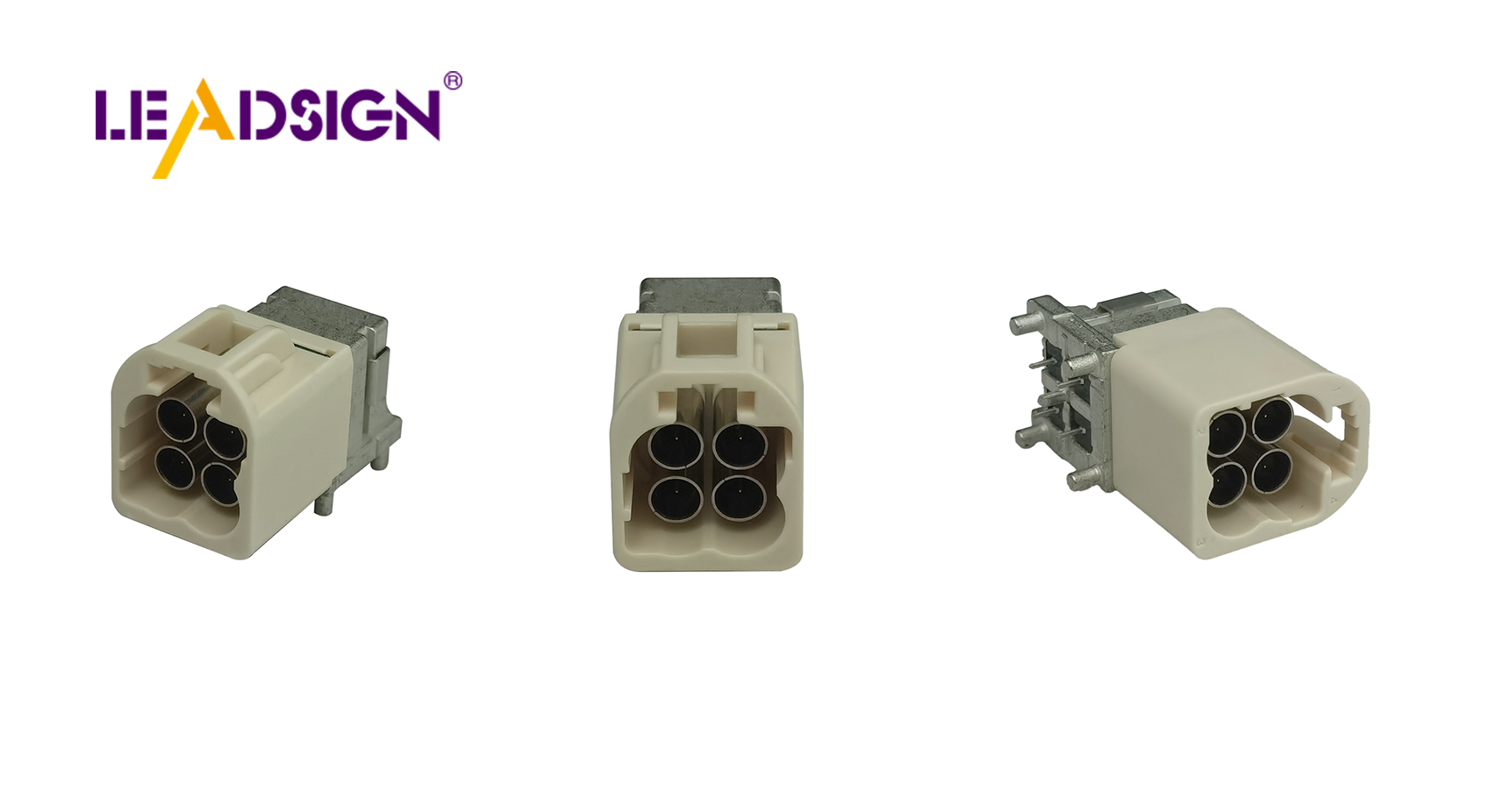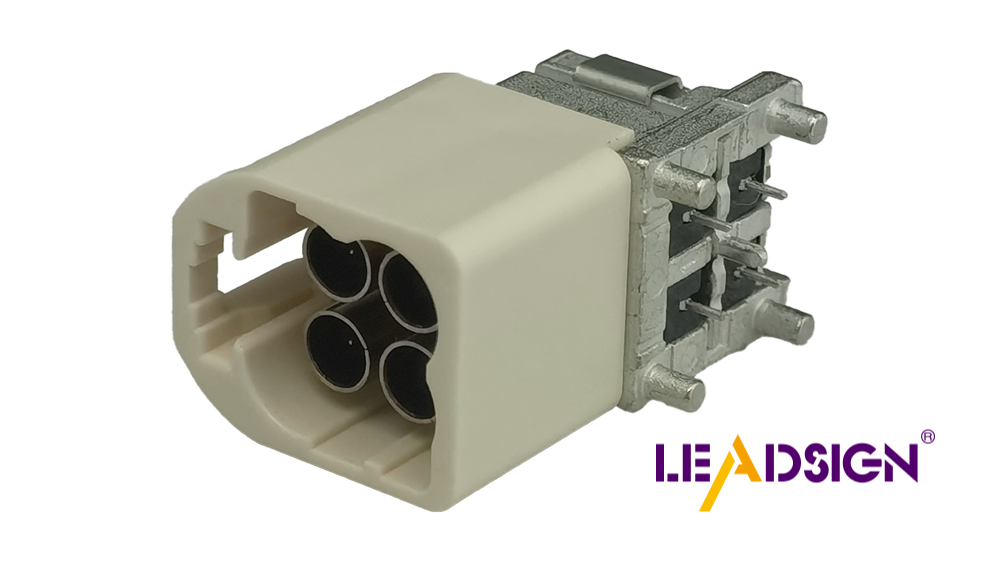The Ultimate Guide to Automotive Wiring Connector Types

In today's cars, automotive electrical connectors types are very important. They help parts talk and share power easily. As cars get more gadgets, good connectors are needed more. Connectors link things like lights to smart car systems. Knowing their role stops electric problems and keeps cars running well. Using OEM connectors makes sure new parts fit your car's system perfectly.
Understanding Automotive Wiring Connectors
Definition and Purpose
What are Wiring Connectors?
Wiring connectors are important parts in cars. They link different electric circuits. This helps power and signals move smoothly. They make sure all car systems work right. You see them as blade, pin, and butt types. Each type has a special job.
Importance in Automotive Systems
In cars, wiring connectors are very important. They give strong links between electric circuits. This is needed for things to work well, from simple power moves to safety checks. Using the right connectors stops power problems and helps car systems talk well.
Basic Components of Connectors
Terminals
Terminals are key parts in car wiring. They join wires to circuits and systems. This stops power cuts and saves space by not needing splicing. Terminals come as ring, spade, or butt types, each with its own use.
Housings
Housings keep connector parts safe inside. They guard terminals and wires from water and dust. Housings stop wires from coming loose by accident too. In cars, they handle shaking so wires stay linked.
Seals
Seals help connectors last long and work well. They stop water and dirt from getting inside which can cause rust or breaks in power flow. In tough spots like under the hood, sealed connectors are best to keep connections safe.
Knowing these parts helps you pick the right wiring connectors for your car needs. Choosing well makes your car's electric systems better for longer.
Types of Automotive Electrical Connectors

Knowing different automotive electrical connectors is key for your car to work well. Each type has a special job and unique traits. Let's look at some common connector types used in cars.
Blade Connectors
Features and Applications
Blade connectors, also called spade connectors, are flat metal pieces that fit into slots. They are used in many car parts because they are simple and easy to use. You often find them where quick disconnection is needed, like fuse boxes.
Features:
Flat metal shape
Easy to plug in and out
Comes with or without insulation
Applications:
Fuse boxes
Relay panels
Speaker links
Advantages and Disadvantages
Blade connectors have good points but also some bad ones.
Advantages:
Quick to set up
Cheap
Easy to find
Disadvantages:
Can't carry much current
Not as secure as other types
Can rust if not covered well
Pin Connectors
Features and Applications
Pin connectors are round and fit into sockets. They are used when a strong connection is needed. You see them in places needing many connections, like engine controls.
Features:
Round shape
Good for many connections
Different sizes available
Applications:
Engine controls
Sensor links
Data systems
Advantages and Disadvantages
Pin connectors make strong links but can be tricky to install.
Advantages:
Strong connection
Good for tight spaces
Keeps signals clear
Disadvantages:
Harder to put together
More expensive
Needs exact fitting
Butt Connectors
Features and Applications
Butt connectors join two wires end-to-end. They are great for connecting wires smoothly in cars.
Features: – Round shape – Insulated or not insulated options – Joins wires seamlessly
Applications: – Wire bundles – Fixing wires – Joining wires together
Advantages and Disadvantages
Butt connectors are easy but have limits too.
Advantages: – Simple for joining wires – Makes a strong link – Easy setup
Disadvantages: – Not good for high power – Needs tools to crimp – Can't reuse easily
By knowing these connector types, you can choose the right one for your car. Each has its own features, uses, pluses, and minuses, helping you pick the best one.
Ring and Spade Connectors
Ring and spade connectors are very important in cars. They make strong connections, so they are used a lot.
Features and Applications
Ring connectors have round ends that fit over bolts. This makes them tight and secure. They are used when you need a connection that stays put. Spade connectors have forked ends for easy on-and-off use. They are good when you need to disconnect often.
Features:
Ring Connectors:
Round end for tight fit
Good for lasting connections
Spade Connectors:
Forked end for easy removal
Best for temporary links
Applications:
Ring Connectors:
Battery ends
Grounding spots
Spade Connectors:
Speaker wires
Switch wires
Advantages and Disadvantages
Ring and spade connectors each have good points and some downsides.
Advantages:
Ring Connectors:
Strong, stable link
Stays tight even with shaking
Spade Connectors:
Easy to attach or remove
Works in many places
Disadvantages:
Ring Connectors:
Need tools to put on
Not good if you disconnect a lot
Spade Connectors:
Less tight than ring types
Can get loose if not fixed well
Knowing about these helps pick the right connector type. The right choice keeps your car's electric systems working well.
Things to Think About When Picking Connectors
When picking automotive electrical connectors, think about some key things. These help you find the right connectors for your car's needs.
Weather Conditions
Heat and Water Safety
Cars face tough weather like heat and rain. You need connectors that can handle these. Weatherproof ones have rubber seals to keep water out. This keeps connections safe even in bad weather. For example, Spade Terminals are good for easy disconnects while staying strong against weather.
Shake and Bump Safety
Cars, especially big ones, shake a lot. Connectors must stay together during this. Look for ones with strong locks so they don’t come apart from shaking or bumps. Strain relief helps stop wires from bending too much at ends.
Power Needs
Current and Voltage Limits
Know your car’s power needs when choosing connectors. Each type handles different power levels. Pick ones that match your car’s power to stop overheating and keep power flowing well.
Wire Size Match
Connectors should fit the wire size in your car. Wrong matches can cause bad links and electric problems. Make sure connectors fit the wire size for a safe connection.
Setup and Care
Easy Setup
Easy setup is important when picking connectors. Some, like pin types, use push-and-pull which makes them simple to put in without turning.
Long-lasting Use
Strong materials make connections last longer. Choose those made of gold or silver-plated metals for less signal loss. Regular checks and cleaning help them last longer, keeping your car's systems working well.
By thinking about these things, you can pick the best automotive electrical connectors for your car, ensuring they work well and last long.
Best Practices for Using Automotive Wiring Connectors
Proper Installation Techniques
Installing automotive wiring connectors right is key. It keeps your car's electrical systems working well. Here’s how to make a good connection:
Tools and Equipment Needed
Get the right tools before starting. They help you install connectors easily without breaking them.
Wire Strippers: Take off wire covers without harm.
Crimping Tool: Attach connectors to wire ends tightly.
Screwdrivers: Hold connectors in place firmly.
Heat Gun: Shrinks tubing for extra cover.
Multimeter: Checks if electricity flows well.
Step-by-Step Installation Guide
Follow these steps to put in wiring connectors properly:
Prepare the Wires: Strip 1/4 inch of cover from wire ends.
Select the Right Connector: Pick one that fits the wire size and job.
Attach the Connector: Put stripped wire in connector, crimp it tight.
Insulate the Connection: Cover with heat shrink tubing, use heat gun to seal it.
Test the Connection: Use multimeter to check for breaks or weak spots.
These steps help make strong connections that last through tough conditions.
Maintenance Tips
Keep automotive wiring connectors in good shape for best performance. Here are some tips:
Regular Inspection
Check often for any damage signs like:
Corrosion: Look for rust or color changes on connectors.
Loose Connections: Make sure all are tight and won’t come loose.
Physical Damage: Look for cracks or breaks on parts.
Regular checks find problems early, stopping bigger issues later.
Cleaning and Replacement
Clean and change connectors when needed to keep them working well.
Cleaning: Use cleaner to remove dirt from connectors so they work better.
Replacement: Change worn-out or broken ones with new ones for safety, especially in bad weather areas like wet or hot places.
Studies show weather can affect connector work a lot. Picking good ones and taking care of them keeps your car safe and stable even in hard conditions.
By doing these things, you make sure your car's wiring stays strong and lasts long, keeping everything running smoothly.
Picking the right car wiring connector is very important. It helps your car work well and stay safe. The right connector fits well and stops electric problems. Use good habits like checking often and using the same brand as your car. This makes things work better and last longer. Keep connectors clean and change old ones to stop trouble. To learn more, ask experts or read more about it. Being careful keeps your car's wires in good shape, making sure everything works smoothly for a long time.
See Also
Exploring Ford Fakra Connector Technology
In-Depth Look at HSD Connector Technology
Essential HSD Connector Knowledge for Auto Sector

